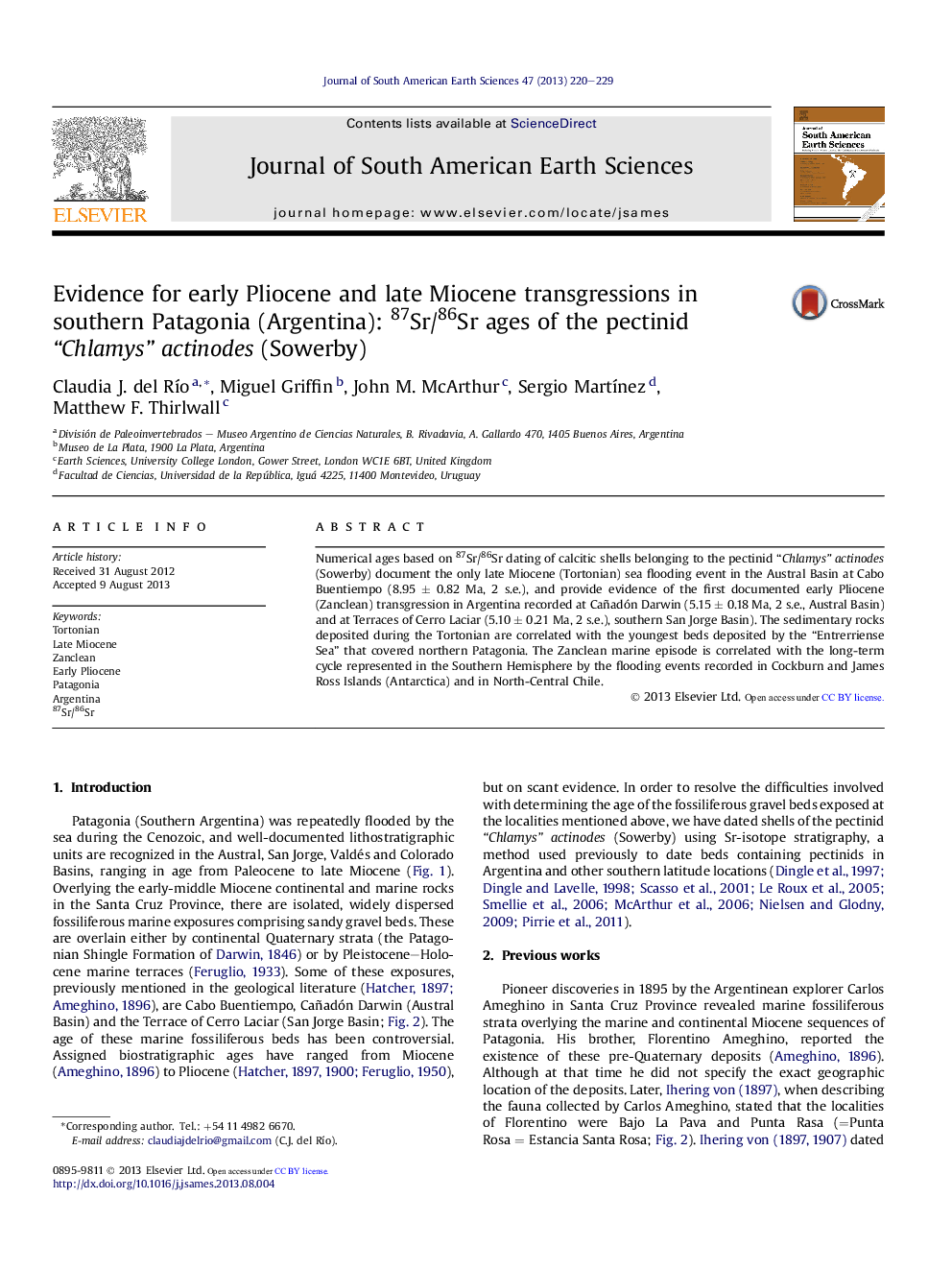| کد مقاله | کد نشریه | سال انتشار | مقاله انگلیسی | نسخه تمام متن |
|---|---|---|---|---|
| 6431449 | 1635162 | 2013 | 10 صفحه PDF | دانلود رایگان |

- Strontium ages of pectinids prove the existence of two new transgressions in Patagonia.
- Zanclean and Tortonian transgressions are recorded in Santa Cruz Province.
- This finding fills in the gap between Miocene and Pleistocene beds in Patagonia.
- These results indicate the southernmost extension of the “Entrerriense Sea” in Patagonia.
Numerical ages based on 87Sr/86Sr dating of calcitic shells belonging to the pectinid “Chlamys” actinodes (Sowerby) document the only late Miocene (Tortonian) sea flooding event in the Austral Basin at Cabo Buentiempo (8.95 ± 0.82 Ma, 2 s.e.), and provide evidence of the first documented early Pliocene (Zanclean) transgression in Argentina recorded at Cañadón Darwin (5.15 ± 0.18 Ma, 2 s.e., Austral Basin) and at Terraces of Cerro Laciar (5.10 ± 0.21 Ma, 2 s.e.), southern San Jorge Basin). The sedimentary rocks deposited during the Tortonian are correlated with the youngest beds deposited by the “Entrerriense Sea” that covered northern Patagonia. The Zanclean marine episode is correlated with the long-term cycle represented in the Southern Hemisphere by the flooding events recorded in Cockburn and James Ross Islands (Antarctica) and in North-Central Chile.
Journal: Journal of South American Earth Sciences - Volume 47, November 2013, Pages 220-229